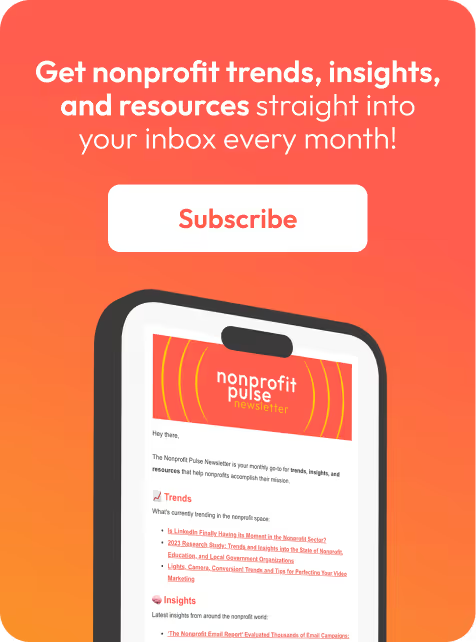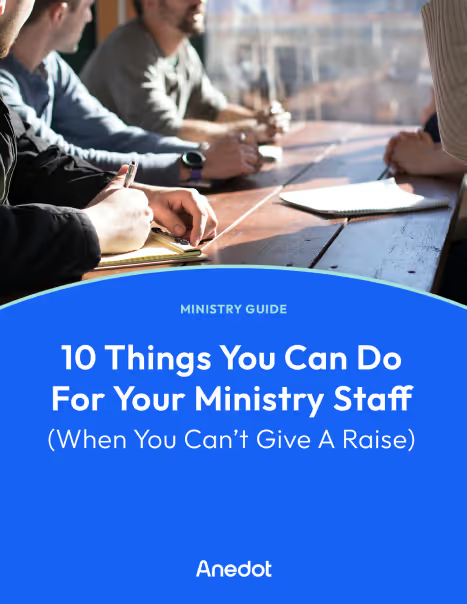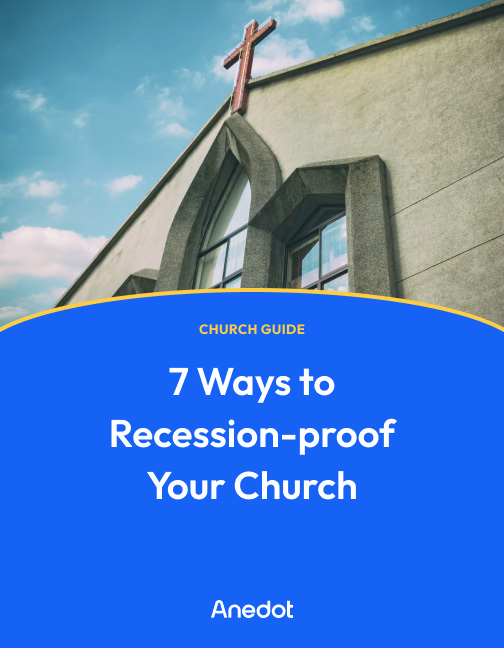Podcast episode transcript ↓
Josh:
Welcome to Big Ideas For Every Org. We help leaders discover powerful, big ideas that increase organizational impact.
I'm Josh, and today we're joined by Mark MacDonald.
For more than 35 years, Mark has worked in branding, advertising, and communication.
Now he focuses on helping churches communicate effectively as a brand strategist, bestselling author, speaker, and consultant with his agency, Be Known For Something.
He also serves as the executive director of the Center for Church Communication, influencing almost 10,000 churches.
Mark, thanks for joining us.
Mark:
Hey, thank you for having me.
Josh:
Hey, so before we jump into the topic today, tell us a bit about yourself and your organization.
Mark:
Yeah, because sometimes when people, they say who I am, they start with that bio and it's like, "Who is that guy? I want to listen to that guy." "Oh, yeah. It's me."
I am Mark MacDonald, and I'm a church brand strategist, but I'm also a pastor of communication.
I consult with a ton of churches and organizations all across North America.
I just really want to help them become known for something relevant and needed. You'll probably hear, okay, so I'm Canadian, 'ay,' I'm a Canadian-born American now for a whole year I've been an American and I live in Jacksonville, Florida.
I've written a bunch of church communication articles.
I've published over 800 of them, and I've also authored the best selling book, Be Known for Something.
I just can't believe I get to do what God allows me to do.
Josh:
That's awesome. That's awesome.
Yeah, Canadian or former Canadian. I'm not sure how one defines that now, but living in Jacksonville, Florida, you must be loving that.
Mark:
Oh, my goodness.
Every Canadian, like all of the population of Canada, we almost all live within 500 miles of the US border. And everyone's like, "Oh, because you all love Americans."
It's like, "No, we love as much heat as we possibly can so I love being in Florida."
The problems associated with communicating in a noisy world

Josh:
Awesome. Awesome.
Before we talk about the solution to the big idea today, tell us how'd you begin to see the problems associated with communication in such a noisy world.
Mark:
Oh, man.
Josh, I know that you're a lover of information and analytics and all the numbers are telling us the same thing that trends are down.
People aren't listening anymore.
In the world that I'm mainly living in with talking to pastors and churches, church attendance is dropping.
But ultimately, engagement for any communication is being challenged right now.
It's funny because almost everyone wants a voice, but when given the voice, most people don't even know what to talk about.
Josh:
Yeah, that's so true.
I've seen it over the past few years.
Just the trouble, the challenge of breaking through the noise and then the trust associated with that. It's tough days for communicators all around.
Mark:
A lot of people are talking and they seem to talk about everything and then they find it hard to attract and actually keep an audience.
It seems like when the internet came along, it opened up so many opportunities and so many choices.
And because of this internet world that we're living in, we all have very close to us a lot of information, and that information has become almost overwhelming.
What we like to call it in the communication world is just noise.
I grew up, my parents, they saved up for many years to buy us our set of encyclopedia books and it was on our bookshelves.
Anytime that we had a question at the dinner table that my parents couldn't answer, they would say, "Well, that's something you need to go to the World Book for."
We would go there and now think about it.
It's as close to us as an AI device or even just speaking into your phone or just quickly going onto the website.
But the problem is it's not the website, it's many, many websites and everyone's trying to talk about so many different things.
Ultimately, that noise is all around us so we have to have a mechanism to allow us to have some sanity in our world.
That mechanism is being able to ignore what isn't important to us.
How to communicate more by saying less

Josh:
Absolutely.
Today we are talking about communicating more by saying less.
Mark, unpack for us. How did you discover this?
Mark:
Well, and it's interesting because over my years, I was senior creative director for one of Eastern Canada's largest ad agencies.
Out of all of that, the more that I got to work with really good solid brands, I realized that they were really concentrating and focusing on one area and becoming really, really good at it.
When the internet came along, it seemed like you could talk about anything, but the problem was is that a lot of brands, a lot of organizations, they try to become the Jack of all trades where, "Hey, yeah, maybe we could add that and maybe we can add this service or this product."
But the problem is that there really needs to be a clearly defined, what we call playing within the fences.
It's like clearly define those fences.
Social media influencers, which social media is a great place to watch engagement because there's those people who are out there and they're droning on and no one's paying attention.
Then there's those influencers who they've identified an audience, they know exactly what that audience needs, they're really delivering it, what the audience is looking for, and it's clearly defined, it's very narrow, and that subject area becomes their expertise.
Josh:
Yeah.
What was the process that you went through implementing this idea of communicating more by saying less?
It's counterintuitive to what most people think is "I just need to say more. I need to say more on my website. I need to say more on social media. When I give talks or I'm in meetings, I need to just say more. That's what needs to happen."
How did you go about implementing this in your areas of influence?
Mark:
Well, it's interesting because when I started the agency, which was almost 21 years ago in Winston-Salem, North Carolina, that was my hop, skip, and a jump to Florida.
When I started the agency, I quickly thought, "Okay, well, I better not be so narrowly focused." Instead, I thought, "Well, maybe I can just try to make some money or bring in some clients."
And whoever came to me, it seemed like, "Yeah, you know what? I could help you with that."
The problem was is that it made me lose focus.
I remember the conversation we had. We sat down and it's like, "You know what? We want to really help the church."
If we're focused on restaurants or hospitality or banking industry or any of those other things, all of a sudden we lost our focus. And we know that churches absolutely need branding and they need to gain focus, what we call their thread, that one thing that they need to become known for.
If they are known for that one thing, then it will rise above all the other noise.
We had to practice it ourselves, which was a fun excursion because it allowed us to be able to experience the issues that come with trying to focus and how tight that focus needs to be.
Josh:
Yeah.
Speak to what were the challenges that you faced and had to overcome with this.
Mark:
Well, it's chasing squirrels.
There's so many times that you think, "Okay, well, we're one of the leaders here in the states for branding so could we help another category of clients? Yeah, absolutely."
The only thing is that you start to lose focus because when I talk, I talk into a very narrow area and I'm just constantly looking for as much research and as much numbers and understanding within those fences.
The moment you say that to any entrepreneur, anyone who is that creative mind, it feels really, really limiting.
There's a story, a great research study that was done, where kids were told to go out and to play into a playground area.
The playground area was actually defined by busy streets all the way around it.
When the kids were told to play, because of the busy streets, they tended to gravitate to the center.
When they just put a simple fence around the playground, it seemed like the kids would play and cover more ground and would actually play right up to the fences.
What I've found is that all of those squirrels that you want to chase, oftentimes, it makes you want to go over those fences.
But I find that you become more creative if you have some limitations and establish those limitations at the very beginning.
Josh:
How do you define or find those limits for an organization?
Mark:
That is the question because the sky is the limit sometimes when people think, "Oh, my goodness, I can do whatever I would like to do."
But the problem is that we do need to actually define those fences.
And so how do you do it? It's so much easier to be known for something if you're looking at a smaller group.
There's really three steps. It all starts effective communication rises and falls on how well you know your audience.
I would almost like to add in there, the more you limit your audience.
Again, it gets down to the editing process about communicating more by saying less.
If you want to rise above all the noise, the smaller the group, the better.
Identify and limit who you want to talk to.
When you clearly define that, that's called a persona, and in the persona, you want to make sure you understand their needs, concerns, and goals.
What is it that makes them a group? What unifies them as that small group?
Then ultimately what you want to do is say, "Okay, so what are their biggest needs, concerns or what is their biggest goal that they haven't been able to achieve themselves? What can we do to become a solution to those needs or concerns or a path to the goals?"
Then how do you say it in three to five words so that it's really simple and easy to remember?
It's not mission, vision, and values.
This is an external message where you speak it into the audience.
You speak it out into that small limited group, and they quickly look up to say, "Oh, what was that? Could you just tell me a little bit more?"
That thread is the thing that you want to establish so that you don't go outside of those boundaries.
You instead use that as a boundary to get their attention.
The positive effects of communicating more by saying less

Josh:
That's great.
Looking back now, what are some of the positive effects and results you've seen from helping organizations communicate more by saying less or being known for something?
Mark:
Oh, my goodness.
Okay. It's an exhausting world if you're trying to be something to everyone, and it's not even helping.
Ultimately, if you become known for it, being someone who talks about everything, you really don't become known for it.
What we found is that the organizations that we're working with, helping them understand, and it's a really simple process, it's just identifying who you want to communicate to, and then understanding their needs, concerns, and goals.
Then just discover a thread that becomes a solution to the needs and concerns or a path to the goals.
And that thread then all of a sudden, it's like when pastors or the entrepreneurs or the people in charge of the organizations that we talk to is freeing to them to say, "Oh, I get it. I understand this thread," which is a traditional brand positioning statement, which is three to five words.
It's simple. It's easy to use.
All of a sudden, when you have the right thread, you'll get the attention of the people that you want to talk to because you become their pain experts.
You're essentially saying their name in everything that you're doing.
Then as soon as you get their attention, and as soon as you engage by saying less, communicating less, that what it does is it gets them just to look up.
In that moment of looking up, you get to talk about your solutions.
Josh:
I love that.
It reminds me of the phrase that we're seeing a lot now in social media marketing, which is stop the scroll, right?
How do you stop the scroll?
And what you're talking about is stopping the scroll in real time, in real life.
Getting people to stop and listen to what this organization is about, what this leader is trying to say, et cetera.
That's great.
Mark:
It's interesting.
It almost sounds trite to say it this way, but really it's say their name, speak their pain, solutions to proclaim.
The thing is that if you say their name, they'll look up.
If you talk about their pains, they'll certainly look up.
But then if you have a solution, they will truly engage with you to say, "Tell me more."
The problem today is that a lot of people are saying, "Tell me less." We want to get them to the point where they say, "Yeah, no, tell me a little bit more about that."
As soon as you get that sweet spot, that's where communication shines and you get to shine.
How can effective communication be achieved?

Josh:
Mark, what would you say to those who are on the fence or have concerns about implementing this?
Mark:
Well, and it's interesting because oftentimes people will call us and they'll start talking and it's almost like they're asking us for the solution and we show them and we can prove to them that it works.
Then they want to resist it because it just doesn't feel right.
"So if I communicate less, more people will listen?" It's true.
If you communicate more, people will actually see that as noise and they'll start the ignoring process. Instead, figure out what you should talk about and talk about it all the time.
When somebody resists that, I just say, "So what you're doing, is it working for you?"
For the most part, all the numbers are saying that is not working.
Josh:
Mark, what would you say to those who have tried a similar approach or exercise and they're frustrated because it didn't seem to work.
What would your advice be to them?
Mark:
Yeah.
The thing is that I work in this all the time, so I get it. This is our world.
But a lot of people, when they try something, it's like the first time your child decides that they're going to go out and try basketball.
It probably won't work right away.
But what I would encourage people is that there's the people side and there's the product side.
Either something's broken on the people side, which is that it's not a clearly defined persona.
When I say that, I want to make sure like the smaller the group, the easier it is to get them to listen.
But it needs to be a sweet spot.
It needs to be a small group that's growing, and especially in the community that you're dealing with.
You want to make sure that out of all the groups like that, there's a small group of stereotypically described people that have needs concerns or goals.
Then you want to make sure that it's a growing group.
Because if they're in a decline, you'll probably end up declining with them.
If you start talking about your solution and that's not connecting, then you're either not a great pain expert because you have to poke the pain or what we call scratch the scab, because oftentimes people have tried to heal it themselves and you need to come along and pick the scab in order to make sure it gets healed properly.
Then it's like going to the doctor.
If you thought your shoulder used to work a whole lot better, it's like sometimes it's healed improperly and it needs to be opened up and professionally looked after.
That's where you just want to make sure that the people group is the right people group, that the pain is the right pain point you're dealing with, and then is it high enough on the Maslow's hierarchy of needs so that people go, "You know what? I really need to fix this."
Then you have to have the right solution and then it gets into price point and all of that stuff. That's the formula, and oftentimes it's identifying what is broken along the way.
Closing thoughts

Josh:
Mark, this has been so helpful. Where can our guests learn more about you and what you're doing?
Mark:
Beknownforsomething.com is a great place to start.
If you go to the /subscribe or go to the subscribe that's throughout the entire website, every time that an article of ours is published about communications, we send that to you and that usually ends up being once a week we are sending out an article.
But also on social media, if you look up Mark MacDonald or @MarkMac1023 is usually the handle that I use, I would love to connect with whoever would love to connect with me.
Josh:
Awesome. Awesome, Mark.
Thanks so much for coming on the show.
Mark:
Thank you for having me.
Josh:
Hey, thanks for listening.
If you enjoyed this episode, please share it with others or leave us a rating and review.
To view show notes and resources mentioned in this episode, visit anedot.com/bigideas. Again, that's A-N-E-D-O-T.com/big ideas.
We'll see you next time.
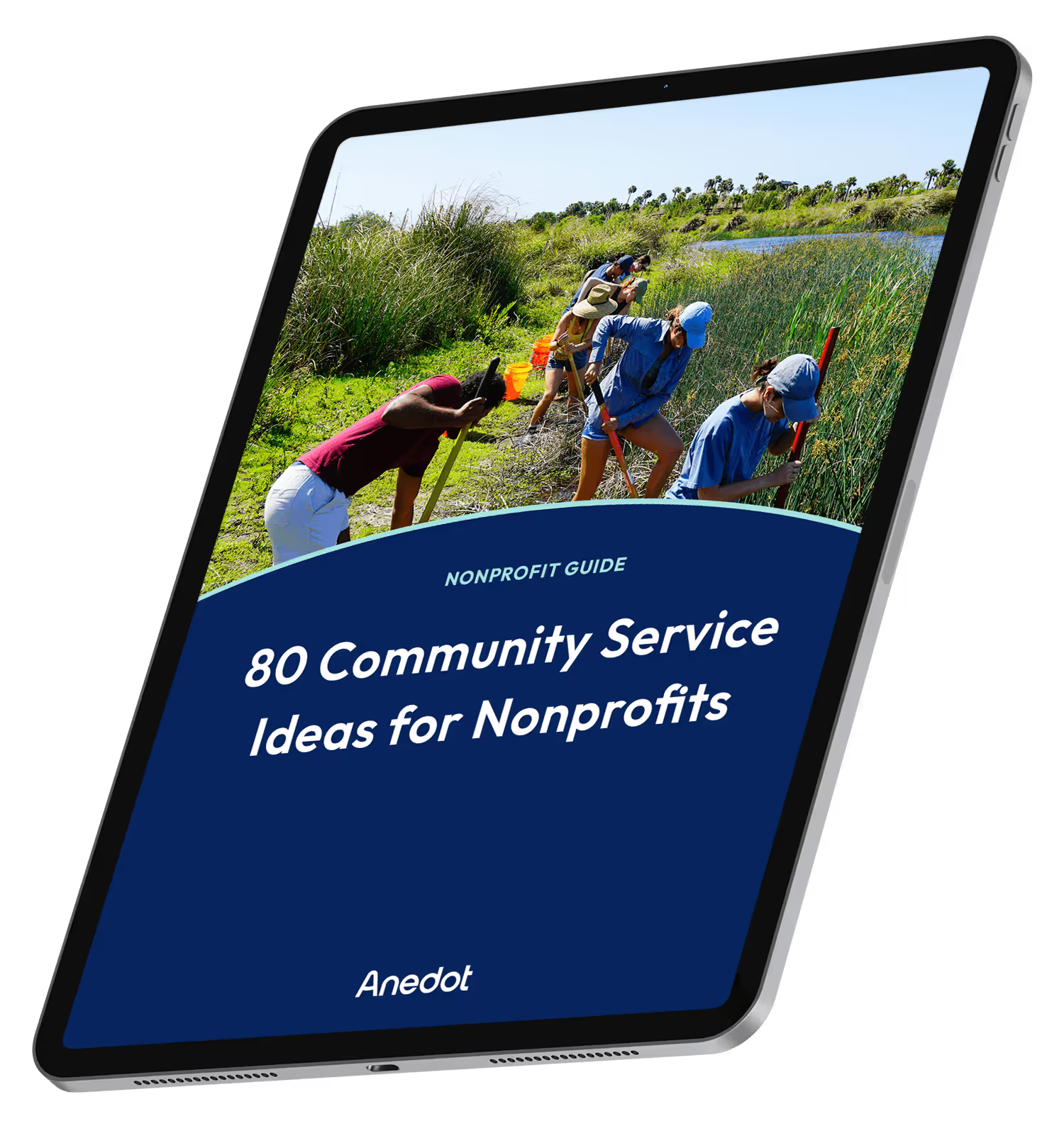
80 Community Service Ideas for Nonprofits

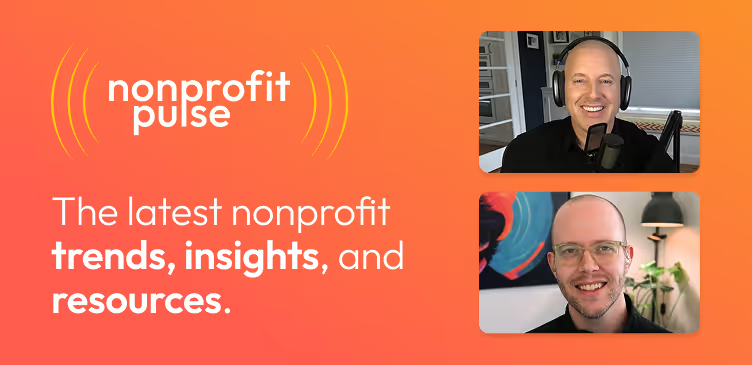
Show notes:
- Big Ideas for Every Org
- Agency: Be Known for Something
- Book: Be Known for Something





